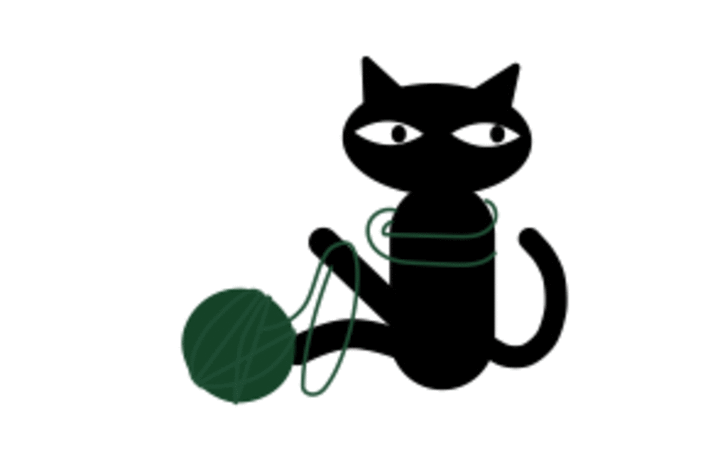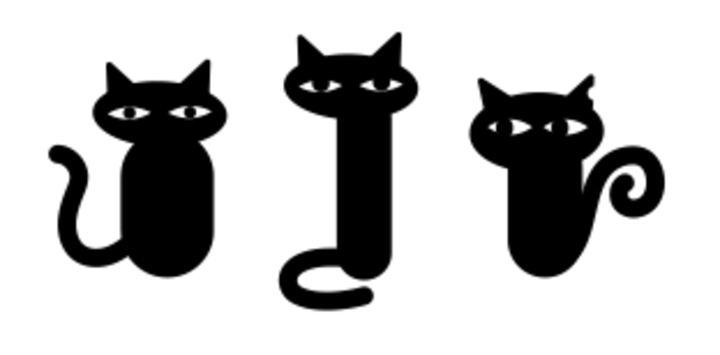Table of Contents
What is a GIF?
GIFs (Graphics Interchange Format) are like mini-videos without sound. They’re perfect for conveying reactions and emotions or just adding a touch of humor to your online conversations. From iconic movie moments to viral memes, GIFs offer a way to express yourself quickly and visually in a way that plain text sometimes can’t.

Understanding GIFs
The Technical Side
GIFs might seem magical, but there’s a simple technical explanation behind their animation. The GIF file format supports up to 256 colors and allows for multiple image frames to be stored in a single file. These frames play in rapid succession, creating the illusion of movement. It’s like a super speedy digital flipbook!
While GIFs can resemble short videos, they offer advantages. GIFs typically have smaller file sizes, making them load faster. They also loop automatically, so you don’t have to hit “play” repeatedly.

Why GIFs Are So Darn Popular
GIFs have become a staple of Internet communication for several reasons:
- Humor: A well-timed GIF can be funnier than a thousand words, perfectly capturing a hilarious reaction or summing up an absurd situation.
- Relatability: Can you find that GIF that expresses exactly how you feel? That’s the power of GIFs—they offer a shared visual language for our emotions and experiences.
- Visual Shorthand: Sometimes a GIF says it all, whether it’s a celebratory dance, a facepalm of frustration, or a cute animal doing something adorable. They let us communicate without needing a lengthy explanation.
- Pop Culture Currency: GIFs often reference popular movies, TV shows, memes, and viral moments. Using them demonstrates that you’re in the know and adds a playful layer to your online interactions.
Types of GIFs
The world of GIFs is vast and diverse. Here’s a breakdown of some of the most common types you’ll encounter:
- Reaction GIFs are the ultimate tool for expressing your feelings. Whether you’re shocked, excited, amused, or downright horrified, there’s a reaction GIF for that.
- Pop Culture References: GIFs that feature iconic moments from movies, TV shows, music videos, or viral internet sensations are a beloved way to connect with others who share your fandom.
- Animal GIFs: Who doesn’t love a goofy cat GIF or a majestic nature scene? Animal GIFs offer a dose of cuteness, humor, and awe-inspiring natural beauty.
- Meme GIFs: Memes are ideas or behaviors that spread rapidly through internet culture, and GIFs are often the perfect format for them. These can be funny, thought-provoking, or just plain weird.
- Brand GIFs: Businesses are increasingly using custom GIFs to showcase their products, personality, or values. These can range from playful animations to helpful how-to GIFs.

The Power of Emotion
GIFs excel at tapping into emotions. They can make us laugh, cry, feel nostalgic, or even inspired. That’s because they engage our visual processing system in a way plain text often can’t. When you find the GIF that perfectly expresses what you’re feeling, it creates a powerful connection, whether with a friend or your broader online audience.
Finding the Perfect GIF
GIF Libraries and Search Engines
Thankfully, you don’t have to create every GIF yourself. Here are some of the best places to find them:
- Giphy: The king of GIF libraries, Giphy offers a massive collection that is searchable by keywords, categories, or trending topics.
- Tenor: Another giant in the GIF world, Tenor is known for its excellent search functionality and integration with popular social platforms.
- Reddit: Many subreddits are dedicated to specific types of GIFs (reactions, memes, etc.), providing a fantastic way to discover niche content.
- Tumblr: A haven for pop culture fans, Tumblr is a treasure trove of GIFs you won’t find anywhere else.
Search Tips:
- Be specific: The more precise your search terms, the better your results.
- Try different variations: Didn’t find anything? Change up your keywords slightly (e.g., “happy dance” vs. “excited celebration”).
- Browse trending topics: See what’s popular and get inspiration from current memes and viral moments.

Making Your Own GIFs
Sometimes, the perfect GIF has yet to exist. That’s where GIF creation comes in! Here are some simple ways to do it:
- Screen recording tools: Software like GIPHY Capture lets you record a portion of your screen and turn it into a GIF. Great for capturing moments from videos, games, or presentations.
- Video editing software: Most video editors have GIF export options. This allows you to edit existing video clips (shortening, adding text, etc.) before turning them into GIFs.
- GIF-making apps: There are countless apps specifically designed for GIF creation. These often have fun effects, filters, and editing tools.
Don’t be afraid to get creative! Even a simple GIF of your own reaction, a fun animation, or your brand logo can add a personalized touch to your online communication.
Inspiration and Trends
To stay on top of the GIF game, knowing where to look for inspiration and trending content is key. Here are a few resources:
- GIF library trending sections: Both Giphy and Tenor highlight what’s popular right now, giving you a glimpse into current meme culture and viral sensations.
- Social media: Pay attention to the GIFs others use, especially on platforms like Twitter, where GIF usage is heavy. This helps you stay relevant.
- Meme websites: Sites like Know Your Meme offer explanations and background information on popular GIFs and memes, helping you understand their context and usage.
- Pop culture news: Read entertainment articles and blogs to spot new movie/TV moments or viral videos that are likely to become GIFs.
A note on trends: While using trending GIFs can be fun, ensure they align with your brand’s voice or the specific conversation. Don’t force a GIF just because it’s popular; it’s always better to find one that genuinely fits.

Using GIFs Strategically on Social Media
Best Practices for Each Platform
While GIFs are universally loved, knowing how to use them effectively on different platforms is crucial. Here’s a quick guide:
- Twitter: GIFs are a natural fit for Twitter’s fast-paced, conversational atmosphere. Use them for witty reactions, timely commentary on current events, or to add humor to your tweets.
- Instagram: Focus on visually appealing GIFs that complement your aesthetic feed. You can use them in your Stories, posts, or even Reels for extra engagement.
- Facebook: GIF usage varies widely on Facebook depending on your audience and type of page. GIFs can work for adding humor, connecting with specific communities, or targeting different age groups.
- Messaging Apps (WhatsApp, Telegram, etc.): GIFs are stars in casual conversations with friends and family. They’re perfect for expressing emotions, sending funny memes, or replacing lengthy text explanations.
General Tips:
- Consider your audience: Always tailor your GIF choices to who you’re interacting with.
- Match your brand voice: Ensure GIFs align with your overall online personality.
- Don’t overdo it: GIFs are fantastic, but use them in moderation for maximum impact.
GIFs for Engagement
GIFs hold incredible power to make your social media presence more dynamic and engaging. Here’s how:
- Starting Conversations: A well-chosen GIF can be a fantastic icebreaker. Post a relatable GIF with a question or comment to encourage others to chime in.
- Reacting to Posts: Instead of a simple “like” or text comment, a GIF can more effectively express your enthusiasm, amusement, or support.
- Building Community: Sharing GIFs specific to a fandom, niche interest, or inside joke creates a sense of belonging and shared understanding among your followers.
- Humanizing Your Brand: GIFs showcase your brand’s personality, making you more approachable and relatable to your audience.
GIFs for Marketing
Businesses are harnessing GIFs in clever ways to promote themselves. Here are some ideas:
- Product Demonstrations: GIFs offer bite-sized tutorials on how to use your product. It’s far more engaging than a block of text instructions.
- Behind-the-Scenes Peeks: Use fun GIFs to give your followers a glimpse of your company culture or creative process. This builds trust and makes your brand more human.
- Campaign Amplification: Create custom GIFs related to a specific campaign or promotion to increase visibility and excitement.
- Social Contests: Encourage user-generated GIFs around a theme related to your brand for a chance to win a prize. This creates buzz and expands your reach.
Important Note: When using GIFs for marketing, ensure they seamlessly connect with your brand message. Avoid forced or overly promotional GIFs, as they may come across as inauthentic.
Mastering the Art of GIF Usage
Timing and Placement
To get the most out of your GIFs, when and where you use them matters:
- Reaction Timing: Take advantage of the moment! For maximum comedic effect, reply to a tweet or comment with a reaction GIF as quickly as possible.
- Thread Placement: In longer threads, break up walls of text with a relevant GIF for a more engaging reading experience.
- GIFs as Standalone Posts: A well-chosen GIF can sometimes speak for itself. Add a short caption, and let it shine.
Captions and Hashtags
GIFs are powerful, but sometimes a little context helps. Here’s how to boost their impact:
- Clever Captions: Add a witty comment or relevant question to your GIF for extra punch.
- Strategic Hashtags: Use relevant hashtags (e.g., #fridayfeeling, #catgifs, etc.) to increase your GIF’s discoverability. Don’t go overboard, but a few well-placed hashtags can help people find your content.
- Don’t Over-Explain: Sometimes, it’s best to let the GIF do the talking. Avoid overly wordy captions that diminish the effect.
Balancing GIFs with Other Content
GIFs are amazing, but too much of a good thing can be overwhelming! Strike the right balance:
- Variety is Key: Mix up your social media feed with text posts, images, videos, and GIFs to keep things interesting for your audience.
- Avoid GIF Overload: Don’t bombard your followers with a constant stream of GIFs. This dilutes their special impact.
- Quality over Quantity: A few well-chosen GIFs are better than dozens of generic ones.
Accessibility
It’s important to make your social media presence inclusive for everyone, including those with visual impairments. Here’s how to ensure your GIFs are accessible:
- Alt Text: Most social platforms allow you to add alternative text descriptions to images and GIFs. Describe the GIF briefly and accurately (e.g., “Cat jumping in surprise,” “Character from The Office doing a facepalm”).
- Visual Considerations: Avoid GIFs with rapid flashing or flickering lights, as these can trigger seizures in some people.
- Provide Context: If your GIF carries important information, supplement it with a text description or audio version for those who can’t see it.
- Transcription Tools: If you’re hosting a live event or webinar where you’ll use GIFs, use tools that provide real-time captioning.
Inclusivity makes social media better for everyone!
Copyright and Fair Use
While sharing GIFs widely is common practice, understanding copyright and attribution is essential.
- Give Credit: When possible, identify the original creator of the GIF and give them credit via tagging or linking.
- Respect Ownership: Avoid using copyrighted GIFs (e.g., full clips from movies) in ways that violate the owner’s rights. Stick to GIFs widely shared within meme culture or those expressly created for public use.
- Fair Use: In certain contexts (such as for commentary, criticism, or educational purposes), using copyrighted GIFs might fall under fair use guidelines. However, it’s best to err on the side of caution and be respectful of creators’ work.
When in doubt, stick to GIFs found in established libraries. These often focus on user-generated content or pop culture references that are more likely to be acceptable. You can also create your own original GIFs!
Unleashing Your GIF Creativity
GIF Challenges and Trends
Participating in GIF challenges or creating content around current trends can help you expand your reach and connect with a vibrant online community.
- Popular Challenges: Look out for recurring challenges (e.g., recreate a famous scene with GIFs or use a specific meme template). These are great for showcasing your creativity and connecting with others.
- Trending Topics: Monitor trending hashtags and conversations on social media. Can you create a GIF that resonates with what people are talking about?
- Brand Participation: Some brands and organizations launch their own GIF challenges. This is an excellent opportunity to engage with potential customers playfully.
Advanced Creation Techniques
Want to take your GIF game to the next level? Here’s how to add extra flair:
- Text Overlays: Integrate text directly on top of a GIF to add a funny catchphrase or emphasize its emotion. Many GIF creation tools make this easy.
- Combining GIFs: Create mini-montages by layering multiple GIFs together for a multi-layered, humorous effect.
- Filters and Effects: Explore color filters, vintage effects, or creative distortions to give your GIFs a unique look.
- Custom Animations: If you’re feeling adventurous, try simple animation software to create your own custom GIFs from scratch!
GIFs for Storytelling
Think beyond single GIFs! A well-crafted series of GIFs can tell a short but engaging story. Here’s how:
- Micro-Narratives: Showcase a quick progression of emotions, a funny scenario, or a mini-adventure in a few carefully chosen GIFs.
- Product Demos in Motion: Instead of a lengthy tutorial, create a series of GIFs demonstrating the key steps of using your product.
- Behind-the-Scenes Stories: Use a GIF sequence to give a sneak peek into a creative process or a day at your company.
- Visualize Data: Instead of static charts, consider creating animated GIFs that visualize simple data points more engagingly.
Personalizing Your Communication
Custom GIFs make your social interactions unique and memorable. Here’s how to add your special touch:
- Inside Jokes with Friends: Turn a shared experience with your friends into a GIF only you’ll understand. The inside joke factor makes it extra fun.
- Brand Mascots: Animate your brand’s mascot or logo to use as reaction GIFs, adding a playful element to your customer interactions.
- Selfie GIFs: Record yourself to put a unique spin on reaction GIFs! Use them to express excitement, surprise, or other relatable emotions your audience can connect with.
Remember: Even with advanced techniques, simplicity is often best. A well-timed, carefully chosen GIF can be more effective than a complex creation.

The Future of GIFs
Evolving Trends
GIFs continue to adapt and evolve alongside internet culture. Here’s what we might see on the horizon:
- Micro-GIFs: Expect even shorter, snappier GIFs designed for super-fast communication and reactions.
- Niche Aesthetics: Look for GIFs with hyper-specific visual styles, catering to increasingly fragmented online communities and subcultures.
- Immersive Experiences: GIFs integrated into virtual reality and augmented reality experiences could add a whole new layer of fun and interactivity.
GIFs in Augmented Reality
Imagine GIFs breaking out of your screen and into the real world! AR technology could overlay GIFs onto physical spaces. This opens up possibilities like:
- Interactive Art: GIFs are street art pieces that come alive when viewed through a smartphone camera.
- Product Visualizations: GIFs demonstrating how a product looks or functions while superimposed on the real world.
- Playful Navigation: GIFs are used as playful directional markers or guides within physical spaces.
The Ongoing Cultural Impact
GIFs have become a fundamental part of how we express ourselves online. Their influence on visual language, humor, and online communication is only likely to grow. We can expect GIFs to remain a beloved staple of the internet for years to come.
Conclusion
GIFs are more than just animated snippets. They’re a form of visual shorthand, a way to express ourselves with humor, emotion, and creativity. Whether you’re using them to make your friends laugh, promote your brand, or simply add some pizzazz to your online presence, GIFs have the power to connect and engage.
So the next time you see that perfect GIF, don’t hesitate! Share it, create your own, and let the joy of GIFs spread across your social media world. You may even use them on a fast, optimized website (perhaps one built with Elementor?) to take your digital presence to the next level!
Looking for fresh content?
By entering your email, you agree to receive Elementor emails, including marketing emails,
and agree to our Terms & Conditions and Privacy Policy.






